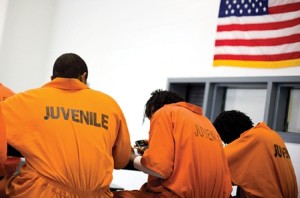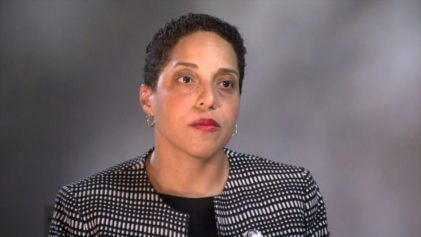In New York, there are events taking place in the area of criminal justice reform that deserve our attention. Governor Andrew Cuomo announced a new program to pardon as many as 10,000 people who were convicted of nonviolent felonies as teenagers, provided they have stayed out of trouble with the law.
The purpose of the Cuomo’s plan is to lift the barriers to housing, employment and other services a criminal record creates, as the New York Times reported. Under this program, the pardons are available to anyone who was convicted of a nonviolent felony or misdemeanor they committed at age 16 or 17.
In addition, it is required that applicants have spent at least ten years without a subsequent conviction, and must be employed, looking for a job or going to school, and paid up on their taxes. Those applicants who are subsequently convicted of an offense could have their pardon rescinded.
“It’s a way to help people get on with their life,” Cuomo told the Times. “When you’re young you can make a mistake, and maybe you don’t have to carry the burden for your entire life.”
In addition, although the governor’s plan does not expunge convictions, it does supply qualified petitioners with paperwork, following a vetting process, to show to a potential employer, agency, landlord or other authority to offset the possible effect of a criminal record.
Frequently, decision makers hold a criminal record against ex-offenders, who face collateral punishment such as exclusion from housing, education, loans, employment and professional licenses because of a run-in with the law. The initiative does not apply to people who were convicted of sex offenses. And while the policy applies to as many as 10,000 people, up to 350 additional people will become eligible each year as they reach their 10 year minimum requirement.
The move by the governor, designed to give second chances to youthful offenders and a reward for good behavior, is part of a larger pro bono clemency program Cuomo announced in October. The governor—previously known for being stingy with pardons and commutations, having granted only nine in five years–granted two commutations and two pardons to people who have rehabilitated themselves and become positive members of society.
“Today we are taking a critical step toward a more just, more fair, and more compassionate New York,” Governor Cuomo said. “With this new initiative, we are seeking to identify those deserving of a second chance and to help ensure that clemency is a more accessible and tangible reality.”
This effort at mass clemency is being hailed as unprecedented, at a time when criminal justice policies throughout the nation are being questioned and challenged due to their costliness, their injustice in ensnaring youth in a school-to-prison pipeline, and the impact on Black and Latino people and the poor.
Last month, President Obama instructed federal agencies to “ban the box”— those questions on job applications which ask prospective employees about their criminal background. Cuomo’s plan does not take this step. The president also announced additional education grants, job training, children’s services and legal assistance to the formerly incarcerated, part of a suite of executive actions enacted by Obama to facilitate reentry for the formerly incarcerated.
In addition, there is a longstanding presumption that young people are not quite as criminally culpable, not as responsible for their actions due to their youth and development. Locking up children and treating them as adults is a recipe for setting them up for failure. If it is presumed they should not have been treated as adults in the first place, one would assume their records should be wiped clean altogether. Moreover, a decade-long waiting period would seem to set up some people for failure, in a system they should not have entered in the first place, had the school and court systems provided a more nurturing environment for young people.
Gov. Cuomo’s plan shows the limits of executive action, as he went to the Republican-controlled state legislature with a “raise the age” bill to make 18 the age of criminal culpability. New York and North Carolina are the only states in which the age of criminal responsibility is placed upon minors as young as age 16, and nine states prosecute 17-year-olds as adults, regardless of the crime. Cuomo noted that following the status quo is an injustice, as “we are relegating hundreds of teenagers each year – mostly young men of color – to an abusive prison environment that makes them more likely to commit crimes in the future.”
In his presidential proclamation of Youth Justice Awareness Month this past September, President Obama stated that there are over 1 million young people arrested under age 18, of which the vast majority are for non-violent crimes. Nearly 55,000 individuals under age 21 are locked up in juvenile justice facilities across the country, disproportionately young Black and Brown people, including tribal youth, and a growing number of girls and young women.
“In addition to those serving time in juvenile justice facilities, on any given day, more than 5,000 youth under age 18 are serving time in adult prisons or local jails,” the president said.
According to the Raise the Age-New York campaign, an initiative led by the Children’s Defense Fund-New York and Citizens’ Committee for Children, adolescents are children, as the human brain is not fully developed until age 25. As such, adolescents, whose cognitive skills are still developing, have impulsive behavior and are unable to focus on the consequences of their behavior.
“Because the adolescent brain is still developing, the character, personality traits and behavior of adolescents are highly receptive to change; adolescents respond well to interventions, learn to make responsible choices, and are likely to grow out of negative or delinquent behavior,” the campaign said.
The group notes that young people who are treated as adults in the criminal justice system are 34 percent more likely to be re-arrested than youth in the juvenile justice system. In addition, a study comparing youth funneled through New York adult courts and New Jersey youth courts found a higher recidivism rate in New York. Juveniles in New York were 100 percent more likely to face rearrest for violent offenses, and suffered from higher re-incarceration rates and shorter periods for re-arrest.
Moreover, an Illinois study found that juvenile crime declined by 14 percent when that state began to prosecute 17-year-olds as juveniles. And contrary to predictions by juvenile justice reform opponents, the juvenile justice system was not overloaded.
Meanwhile, a report from the John D. and Catherine T. MacArthur Foundation demonstrates the benefits of widespread juvenile justice reform. As Philanthropy News Digest reported, over the past 15 years, every state has enacted some type of juvenile justice reform, as the blurred lines between the treatment of youth and adults in court have given way to more developmentally appropriate policies for children.
The report, Juvenile Justice Reform Takes Root Across States, found that a better understanding of adolescent development have resulted in advances in state juvenile justice reform efforts. The report revealed that states have passed laws to limit the contact minors have with the justice system. The authors also concluded there is substantial room for improvement to better incorporate new findings regarding the vulnerability of youth to psychological damage, their need for support, developmental immaturity, competency and their ability to change.
“[W]hile we have not seen the progress we would like on all fronts or in all states, we have seen important advances, from landmark Supreme Court decisions citing developmental research, to state laws and local policies and programs that treat youth in supportive, age-appropriate ways while holding them accountable for their actions,” wrote MacArthur Foundation president Julia Stasch. “We have seen significant drops in youth confinement and a growing recognition across the political spectrum of what it means to be ‘smart on crime’. These successes are evidence that change can happen — that it does happen — when research and resources are focused on what might seem to be an overwhelming problem.”


